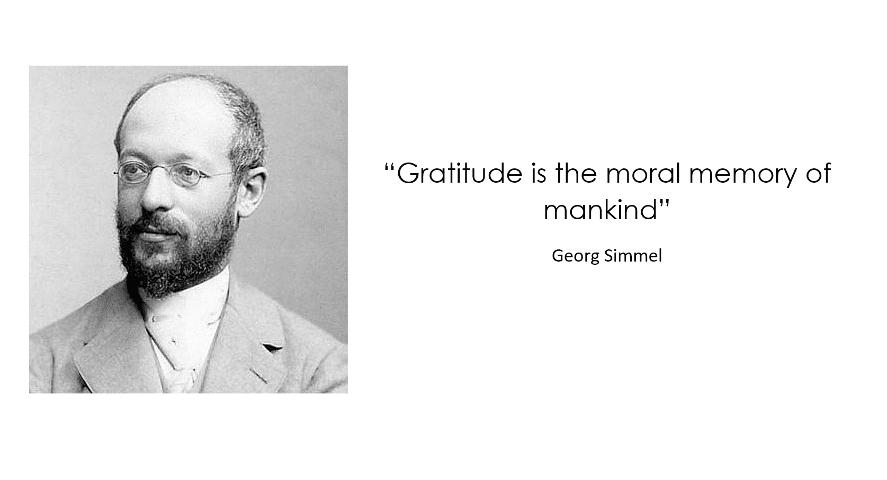Who is Georg Simmel?
Georg Simmel was born in Berlin on March 1, 1858 and died on September 26, 1918 in Alsace, Strasbourg.
Although now known as one of the classic sociology figures, Georg Simmel’s academic career is arguably not as big as his work which is still often used as a reference.
Simmel was a sociologist who was formally alienated, but had a profound influence on some of the intellectuals who had been his students.
Some of them are Albion Small, George Herbert Mead, Robert Park, and WI Thomas.
Simmel was also a colleague of some of the great thinkers of his time such as Max Weber and Wilhelm Dilthey.
Seeing Georg Simmel’s intellectual contributions in the field of sociology, he is undoubtedly one of the most influential intellectuals in Europe and America. His name may be less heard in other parts of the world, but some of Simmel’s concepts are well known.
Sociological studies of social networks and social interactions that are now popular often place Simmel’s work as the theoretical foundation.
Georg Simmel was descended from a Jewish family, the last of seven children. Despite his Jewish heritage, Simmel as a young man changed his religious affiliation to become a Protestant.
At that time in Germany it was not uncommon for a child to convert from Judaism to Protestantism. Affiliation to Judaism is considered to be a barrier to one’s career, especially in 19th century Germany to the early 20th century.
In 1876, Simmel began studying history and philosophy at the King Fredrick William University. At the age of 23, Simmel received an academic degree after successfully defending his dissertation on Kantian philosophy.
Georg Simmel began his career as a private lecturer in Berlin, teaching ethics, philosophy, sociology and social psychology for a fee depending on the audience.
Simmel’s lectures were famous for being fashionable and attracted many guests from Berlin’s intellectual circles. His colleague Wilhel Dilthey of the philosophy department repeatedly sponsored Simmel for a full professorship.
Although universities and faculties have the authority to apply for full professorship titles, the decision rests with the state through the Prussian ministry.
In the end Simmel earned a professorship but not full. Its powers are limited to teaching and the use of degrees. Recruiting students and guiding students is not his authority.
This limitation is indicated for two reasons. First, his race is of Jewish descent. Second, the sociology that Simmel taught was considered anti-positivist, a school of thought that was considered a threat to the stability of the country at that time. Simmel taught sociology without formal support as a sociologist.
Contribution in Sociology
Some of Simmel’s important contributions to sociology and other social sciences include elaboration in an attempt to answer the question, “What is a gesellschaft?”
In his essay in the book Soziologie (1908), Simmel argues that sociology is not a science, but a methodology. Sociology is a methodology for exploring the ongoing process of socialization.
The concept of socialization described by Simmel is now more often referred to as social interaction. As a methodology, sociological research data comes from other disciplines, such as psychology and anthropology.
One of the important concepts that Simmel coined in sociology is formen or forms. The use of the concept of formen makes it possible for the social world to be understood.
According to Simmel, all people in this world interact, and through forms , these interactions can be categorized. Georg Simmel looked at the task of sociology to identify categories and types of social interaction. Formen can be defined as a process of sociation, namely the process of socially categorizing reality.
For example, in a society there is a leader and several followers. The relationship between the leader and the follower forms a certain pattern of interaction.
For example, when a follower meets a leader, he kisses the leader’s hand as a form of respect or courtesy or whatever his name is. Kissing hands is a form of interaction.
This form of interaction can be understood through formen , namely the categorization between leaders and followers.
We can also identify which leaders are followers when we see the kissing scene. Thus the social world can be understood according to Simmel.
Other concepts that are also important and are also considered as the theoretical foundation of the concept of network society are dyads and triads.
The concept of dyad describes two entities that are bound to each other. While the triad is three or more entities that are bound to each other. Dyad and triad are two concepts that determine how the formen process takes place.
Dyad is a unique concept because it consists of two entities or let’s call it two people, where without one of them, the form of interaction can be lost. For example, I can argue with you, but if you leave, I can’t argue anymore.
While the triads are different. Triads form formations with different processes because interactions can still take place dynamically even though several people come and go.
For example, three students eat in the cafeteria while chatting. When one said goodbye to take fried food, the others were still able to chat.
Interaction can still exist. An easy-to-understand illustration of the difference between a dyad and a triad is a ball and chess match.
When a player gets a red card, the ball game can still be continued, but not chess. The concepts of dyad and triad can explain interaction patterns in more complex contexts, such as urban communities and network communities.
